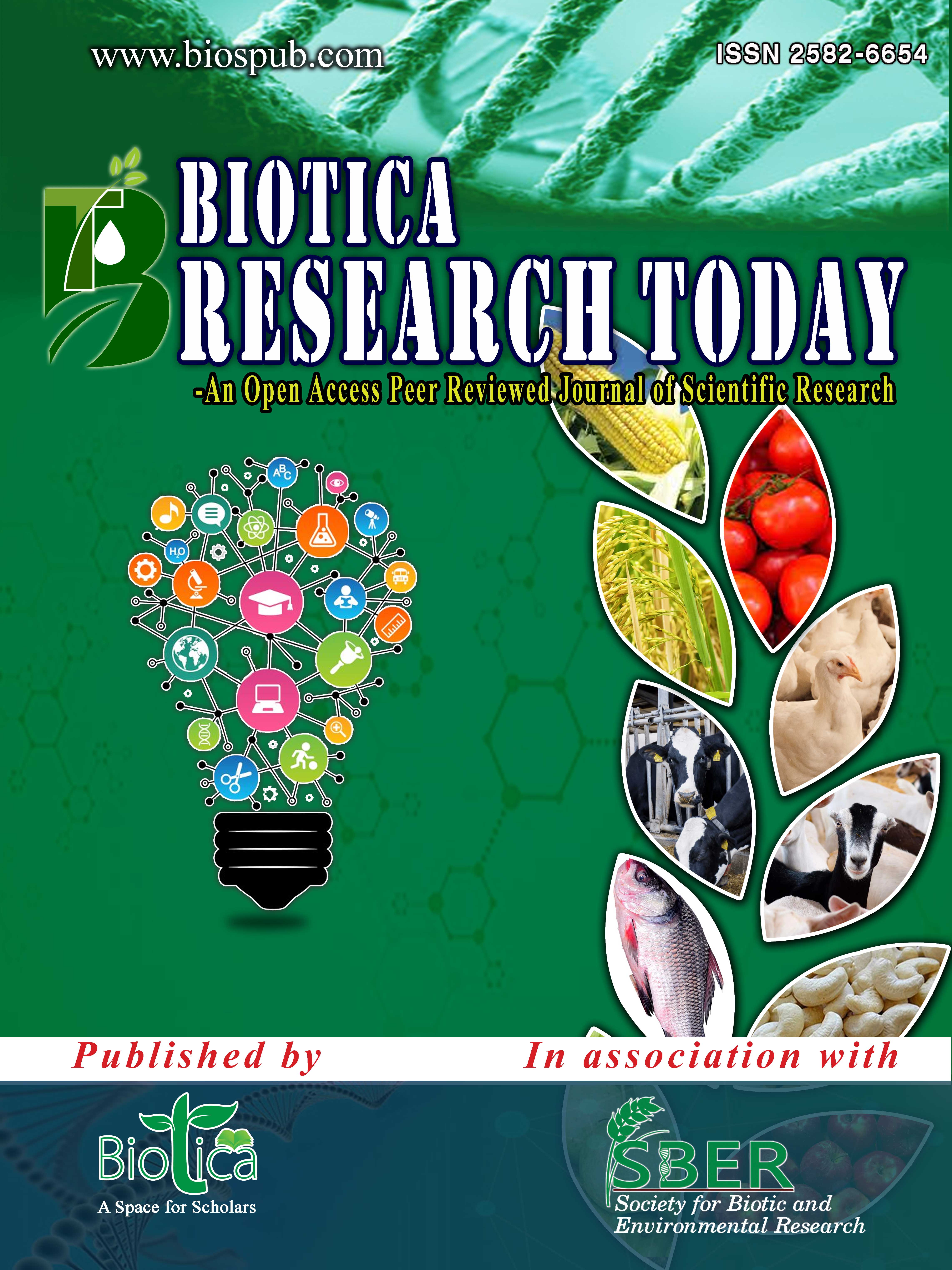Performance of Vanaraja vs. Kamrupa Birds under Backyard System
DOI:
https://doi.org/10.54083/ResBio/4.1.2022/26-28Keywords:
Backyard, Kamrupa, Performance, VanarajaAbstract
The present study was conducted at farmer’s field to evaluate performance of Vanaraja and Kamrup crossbred poultry under backyard system. The day old chicks of both birds were kept in artificial brooding at the KVK farm complex to ensure uninterrupted power supply round the clock up to 1 month to reduce chick mortality. After one month, chicks were supplied to farmers of adopted villages to establish 28 numbers of units (one unit per household) with 14 numbers of birds unit-1. Body weight gain at monthly interval upto 6 months of age and egg production parameters were taken accordingly. It was found that both Vanaraja and Kamrupa were found good by the farmers with slightly little edge of Vanaraja over Kamrupa. Depending on the observations, actions were taken by the KVK to popularize both the breeds equally in the district afterwards.
Downloads
Downloads
Published
How to Cite
Issue
Section
License
Submission of a manuscript implies that when the manuscript is accepted for publication, the authors agree to automatic transfer of the copyright to the publisher (or grant the Publisher exclusive publication and dissemination rights). The Biotica, as the publisher, has the right to enter into any agreement with any organization in India or abroad engaged in reprography, photocopying, storage and dissemination of information contained in this journal. The Biotica has no objection in using the material, provided the information is being utilized for academic purpose but not for commercial use. Due credit line should be given to Biotica where information will be utilized.









 |
|


